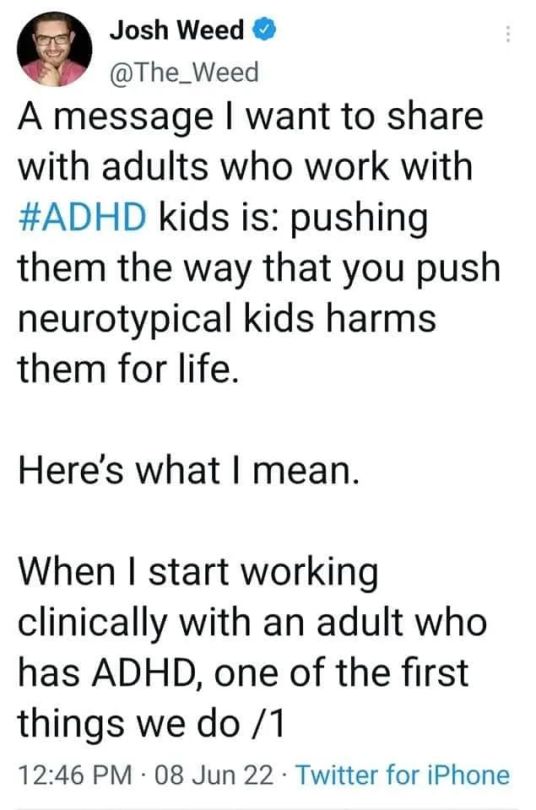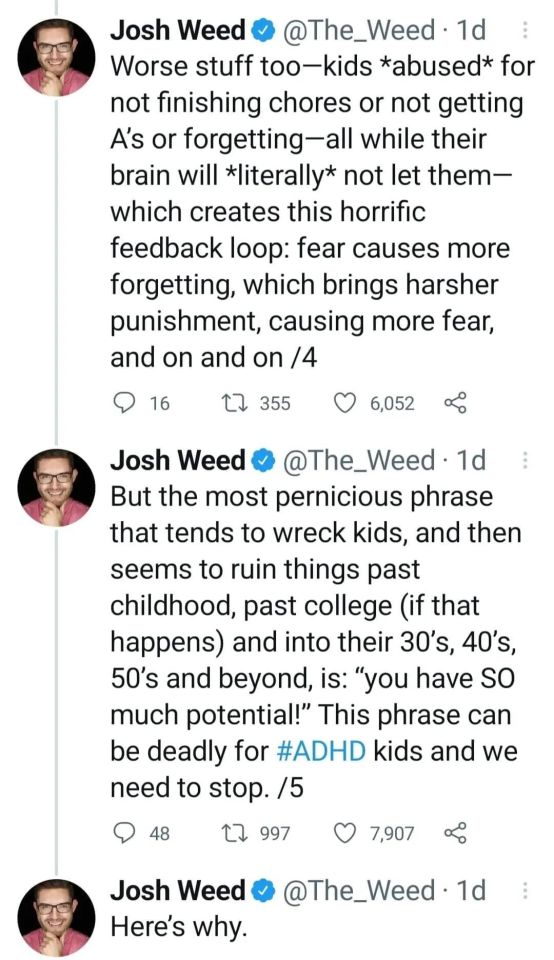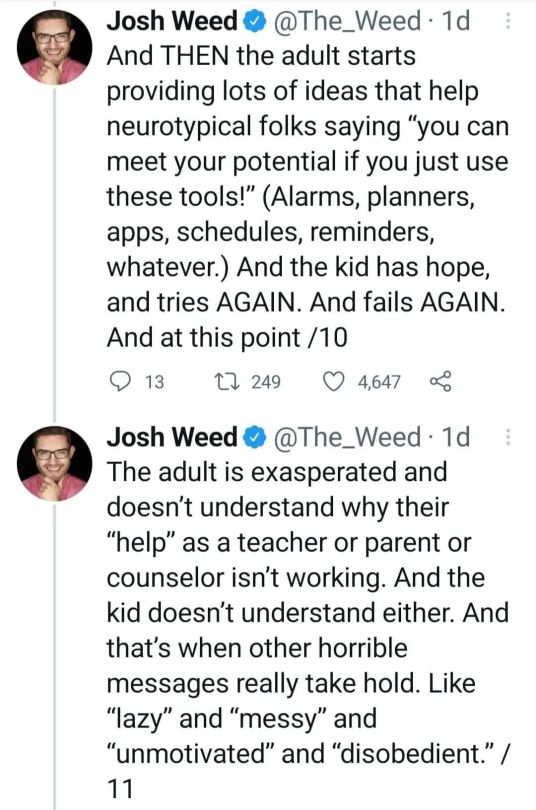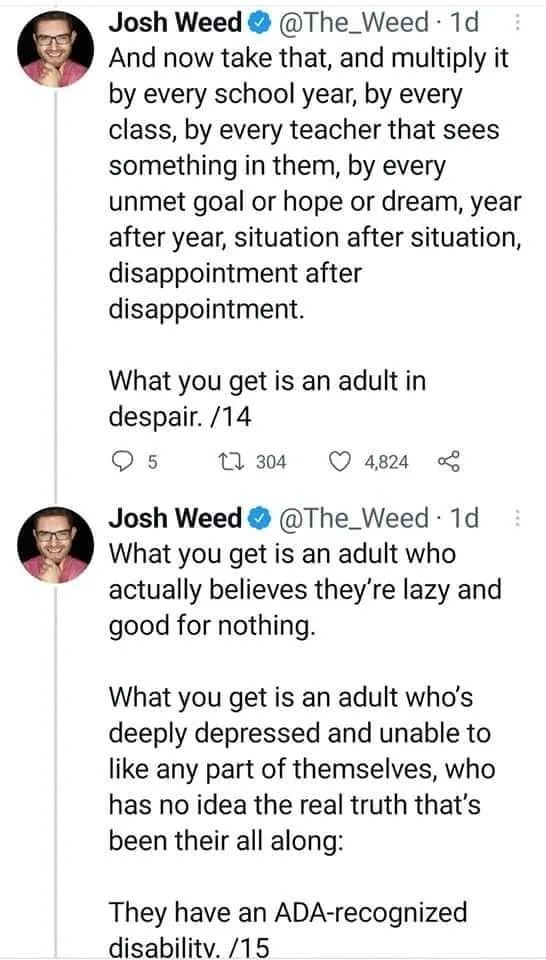The Bipolar II Disorder Workbook | Managing Recurring Depression, Hypomania & Anxiety (Full Text)

The Bipolar II Disorder Workbook | Managing Recurring Depression, Hypomania & Anxiety (Full Text)
Chapter 1: What is Bipolar II Disorder? [⇄]
Chapter 2: Understanding the Treatments for Bipolar II Disorder and a Guide to Using This Book [⇄]
Chapter 3: Applying Acceptance to Bipolar II Disorder [⇄]
Chapter 4: Recognizing the Symptoms of Bipolar II Depression [⇄]
Chapter 5: Modifying Your Thinking and Behavior to Cope with Depression [⇄]
Chapter 6: More Strategies for Modifying Your Thoughts and Behavior [⇄]
Chapter 7: Hypomania-What Is It? [⇄]
Chapter 8: Taking Action to Manage Your Hypomania [⇄]
Chapter 9: Anxiety-What Is It? [⇄]
Chapter 10: Taking Action to Manage Your Anxiety [⇄]
Chapter 11: Involving Your Family and Friends [⇄]
Chapter 12: Putting It All Together to Create a Personalized Wellness Plan [⇄]
More Posts from Bipolaruchiha and Others

I found this table describing two different ways bipolar disorder can present, classic and atypical. It’s interesting because while we talk more about the classic presentation, the atypical presentation is actually more common (it was discovered second, hence the name)
The most interesting thing to me personally is while many with bipolar disorder will fully recover between episodes, many won’t–they will experience subsyndromal symptoms. which is why i, and possibly many of you too, find myself in a sort of depression lite™️ even when im not in a full-on episode.
Here’s a video that goes over the chart and explains the difference between the two and a little bit of the history behind their discovery.
I haven’t seen anyone talk about this on tumblr, so I thought I’d bring it up. It‘s not diagnostic material, but psychologists do use these terms when deciding what medication will (probably) best treat your specific case, with the classic presentation responding better to lithium and atypical responding better to anticonvulsants and atypical antipsychotics
isn’t that neat?
listen to me. thoughts do not have moral weight. a thought will never hurt anyone. the actions you take because of a thought can hurt yourself or other people, but the thought itself is powerless and there is no such thing as thought crime.
"but i have thoughts about being violent towards people! towards children! surely that makes me dangerous!" are you being violent? for real? with your actions? if not, then you are not actually hurting anyone
"but i have thoughts that are offensive and hurtful! they're bigoted, or they're horribly rude, or they're invalidating to others! i'm a horrible person." and what are you doing with those thoughts, exactly? are you taking bigoted actions, or saying those rude things, or taking steps to actually invalidate people? no? well then. no one is getting hurt. and in the meantime, if it really bothers you, doing things like helping unlearn your biases (both against minorities and just, like, against furries and theatre kids and shit) might help some of those thoughts go away, but sometimes you just get shitty thoughts.
"but i have horrific thoughts about sex!" are you hurting people. are you forcing people to do things they don't consent to. or are you just playing the upsetting possibility in your mind over and over again, and acting like that's even remotely the same thing?
thought. crime. is. not. real. OCD. is. hell. (and anything else that may cause intrusive thoughts.) but it does not define you. your thoughts will always, always come secondary to your actions. you're gonna be fine.










Some disability flags based off of the stripes from the original (@capricorn-0mnikorn) flag! These are intended for each specific/sub community. All colors and such have the same meanings, just narrowed down for each category; The grey stripes were added to represent the grey area of being recognized as disabled, in general society, in a medical sense, or otherwise.
Red - Bodily/Physical Disability
Yellow - Neurodivergent Disability
White - Invisible and/or undiagnosed Disability
Blue - Mental/Emotional Disability
Green - Sensory Disability
Image IDs in captions!
Simone Biles saying “Mental health is more important than sports” on the biggest platform she could have possibly done it from is why she’s incredible, actually
for my fellow psychotics who struggle with thinking someone is in their house, a method I’ve found that really works are these guys:

i put them on my front door and anytime it opens they ring. that way if i think someone has broken in or i see someone who isn’t there i can think back to if the bells have rung, and if they haven’t i can assure myself it’s not real. obviously it’s not fool proof, like if you are prone to auditory hallucinations, but it has really helped me calm down in time to avoid major psychotic breaks. it’s a real lifesaver
nonpsychotics encouraged to rb
joy will help you heal.
this applies to everything from “staying home sick from school is easier if you play a low-stress game you like between naps instead of wallowing in your snotty misery” all the way up to “grief and trauma is hard, i understand, but learning to live for yourself again means cherishing all the good moments on purpose”
it may not be everything you need to get better – but joy will help you heal, i promise.
prescribe me adderall or i will start cooking meth in my fucking bathroom you fucking psychiatrist
the idea that meds/therapy can’t fix problems caused by situational/societal issues can coexist with the idea that meds and therapy can be very helpful for many people and shouldn’t be demonized or presented as useless for risk of scaring people away that might really benefit
-
 sailorsenshisweetheart liked this · 1 year ago
sailorsenshisweetheart liked this · 1 year ago -
 panko-in-ur-manko liked this · 1 year ago
panko-in-ur-manko liked this · 1 year ago -
 butterflyboutique reblogged this · 1 year ago
butterflyboutique reblogged this · 1 year ago -
 darlingkisses01 liked this · 1 year ago
darlingkisses01 liked this · 1 year ago -
 draconifay liked this · 1 year ago
draconifay liked this · 1 year ago -
 chiikawachan liked this · 1 year ago
chiikawachan liked this · 1 year ago -
 menhera-info-archieve reblogged this · 1 year ago
menhera-info-archieve reblogged this · 1 year ago -
 wandering-soul-without-a-home liked this · 2 years ago
wandering-soul-without-a-home liked this · 2 years ago -
 little-piece-of-tamlin reblogged this · 2 years ago
little-piece-of-tamlin reblogged this · 2 years ago -
 mercurialfeet liked this · 3 years ago
mercurialfeet liked this · 3 years ago -
 comicrabbitart liked this · 3 years ago
comicrabbitart liked this · 3 years ago -
 alexandersnowbell liked this · 3 years ago
alexandersnowbell liked this · 3 years ago -
 transbee liked this · 3 years ago
transbee liked this · 3 years ago -
 quiensecomioelpie liked this · 3 years ago
quiensecomioelpie liked this · 3 years ago -
 silenthillmutual reblogged this · 3 years ago
silenthillmutual reblogged this · 3 years ago -
 damatris reblogged this · 3 years ago
damatris reblogged this · 3 years ago -
 sh2dogending reblogged this · 3 years ago
sh2dogending reblogged this · 3 years ago -
 7evns liked this · 3 years ago
7evns liked this · 3 years ago -
 smilingeyesboy liked this · 3 years ago
smilingeyesboy liked this · 3 years ago -
 bipolaruchiha reblogged this · 3 years ago
bipolaruchiha reblogged this · 3 years ago -
 fleacollar999 reblogged this · 3 years ago
fleacollar999 reblogged this · 3 years ago -
 fleacollar999 liked this · 3 years ago
fleacollar999 liked this · 3 years ago -
 holdingthebowl reblogged this · 3 years ago
holdingthebowl reblogged this · 3 years ago -
 bonesandblood-sunandmoon reblogged this · 3 years ago
bonesandblood-sunandmoon reblogged this · 3 years ago -
 cupofkauffie liked this · 3 years ago
cupofkauffie liked this · 3 years ago -
 ndiangels liked this · 3 years ago
ndiangels liked this · 3 years ago -
 memyselfandbipolar liked this · 3 years ago
memyselfandbipolar liked this · 3 years ago -
 nickandthecandlestick liked this · 3 years ago
nickandthecandlestick liked this · 3 years ago -
 snakelung liked this · 3 years ago
snakelung liked this · 3 years ago -
 celesticadream reblogged this · 3 years ago
celesticadream reblogged this · 3 years ago -
 celesticadream liked this · 3 years ago
celesticadream liked this · 3 years ago -
 cupidlesbian reblogged this · 3 years ago
cupidlesbian reblogged this · 3 years ago -
 anneinspace liked this · 3 years ago
anneinspace liked this · 3 years ago -
 hannabinoid liked this · 3 years ago
hannabinoid liked this · 3 years ago -
 madmessy liked this · 3 years ago
madmessy liked this · 3 years ago -
 beerwhisperer liked this · 3 years ago
beerwhisperer liked this · 3 years ago -
 zubzub reblogged this · 3 years ago
zubzub reblogged this · 3 years ago -
 mmaryoliver liked this · 3 years ago
mmaryoliver liked this · 3 years ago -
 howling-mad-malfi liked this · 3 years ago
howling-mad-malfi liked this · 3 years ago -
 thecoolestlosers111 liked this · 3 years ago
thecoolestlosers111 liked this · 3 years ago -
 faernwei reblogged this · 3 years ago
faernwei reblogged this · 3 years ago -
 ohcrapilostit reblogged this · 3 years ago
ohcrapilostit reblogged this · 3 years ago -
 soursorrel-archive liked this · 3 years ago
soursorrel-archive liked this · 3 years ago -
 ripdragonbeans liked this · 3 years ago
ripdragonbeans liked this · 3 years ago -
 entitledtofinancialcompensation reblogged this · 3 years ago
entitledtofinancialcompensation reblogged this · 3 years ago















